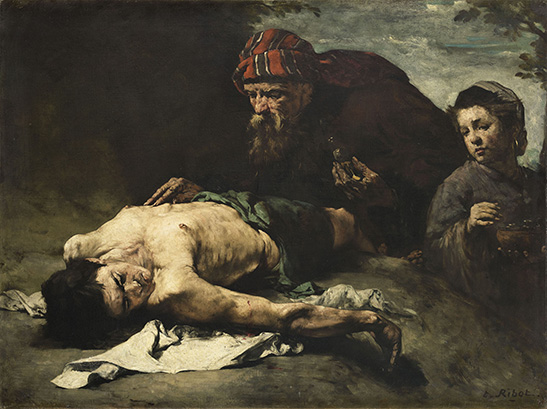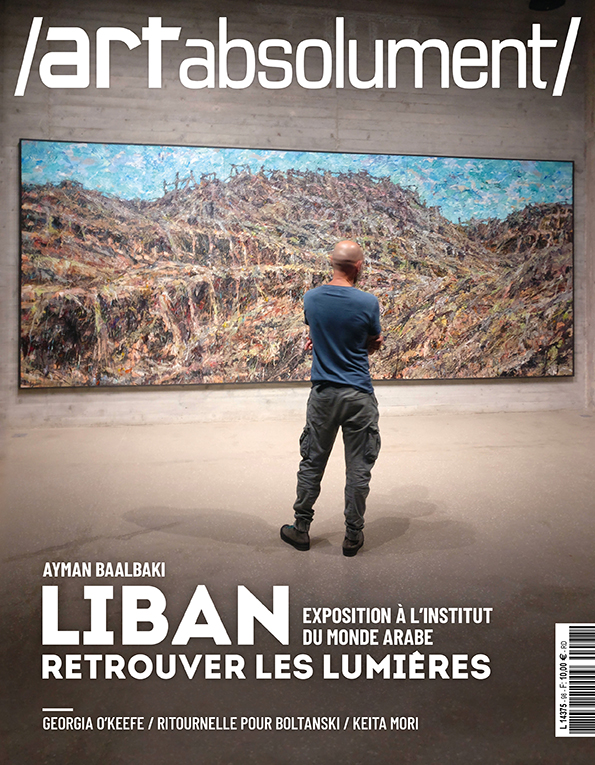Théodule Ribot
1823 (Saint-Nicolas-d'Attez) / 1891 (Colombes)
When he was accepted for the first time at the Salon of 1861, Théodule Ribot was already forty years old and presented six paintings, including cooks, which were very successful. It did not take much more (except for the revival of the subject!) for the public to remember him only as a painter of pantries. However, in addition to this favorite motif, which, although moralistic in appearance, is nevertheless an ideal medium of great art - the one that considers that painting should be embodied in colors, masses, pastes - he exploits children caught in their labor, thus drawing up a critique of a capitalism where the work of miners was only to be regulated later... He also conceived figures of character, musicians and orants (Au Sermon, 1875-78), of the city as well as of the fields (La Petite Laitière, around 1865), without neglecting historical painting. Thus, a Good Samaritan, the first purchase of the State in 1871 (presented to the public at the opening of the Luxembourg in 1874), image of the supplicated in its percluded humanity, worsened resurgence of the most gloomy interpretations of the blackness of men by a disenchanted Caravaggio. Human meat? At least, academy treated in still life. And here is all the genius of Ribot: to go beyond the exordes of Ecclesiastes and to show the final corruption. In the aftermath of the Franco-Prussian butchery, there is no doubt that the Samaritan has been confused with the piou-pious sacrificed yesterday...
Portrait:
Théodule Ribot.
Autoportrait (détail).
Vers 1887-1890.
Lille, Palais des Beaux-Arts.
© RMN-Grand Palais / image palais
des beaux-arts de Lille
When he was accepted for the first time at the Salon of 1861, Théodule Ribot was already forty years old and presented six paintings, including cooks, which were very successful. It did not take much more (except for the revival of the subject!) for the public to remember him only as a painter of pantries. However, in addition to this favorite motif, which, although moralistic in appearance, is nevertheless an ideal medium of great art - the one that considers that painting should be embodied in colors, masses, pastes - he exploits children caught in their labor, thus drawing up a critique of a capitalism where the work of miners was only to be regulated later... He also conceived figures of character, musicians and orants (Au Sermon, 1875-78), of the city as well as of the fields (La Petite Laitière, around 1865), without neglecting historical painting. Thus, a Good Samaritan, the first purchase of the State in 1871 (presented to the public at the opening of the Luxembourg in 1874), image of the supplicated in its percluded humanity, worsened resurgence of the most gloomy interpretations of the blackness of men by a disenchanted Caravaggio. Human meat? At least, academy treated in still life. And here is all the genius of Ribot: to go beyond the exordes of Ecclesiastes and to show the final corruption. In the aftermath of the Franco-Prussian butchery, there is no doubt that the Samaritan has been confused with the piou-pious sacrificed yesterday...
Portrait:
Théodule Ribot.
Autoportrait (détail).
Vers 1887-1890.
Lille, Palais des Beaux-Arts.
© RMN-Grand Palais / image palais
des beaux-arts de Lille
Artist's exhibitions

Théodule Ribot. Une délicieuse obscurité
16/10/2021 - 10/01/2022(Toulouse) Musée des Augustins, Toulouse

